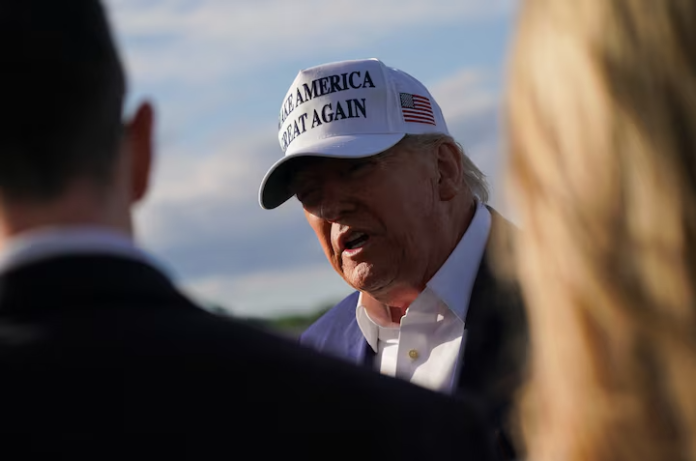During a press briefing on Sunday in Morristown, New Jersey, U.S. President Donald Trump made it clear that his trade policies are designed to boost American manufacturing of critical technologies and defense equipment—not clothing and footwear.
Just before boarding Air Force One, Trump addressed his administration’s focus: “We’re not looking to make sneakers and T-shirts. We want to make military equipment. We want to make big things. We want to do the AI thing,” he stated. The president emphasized that the future of American industry should center on manufacturing chips, computers, tanks, and ships, rather than textiles.
Trump’s comments were in agreement with Treasury Secretary Scott Bessent’s recent remarks that the U.S. doesn’t necessarily need to revive a booming textile industry. That statement stirred backlash from the National Council of Textile Organizations, which represents a sector that already faces stiff competition from low-cost imports.
Despite the controversy, Trump doubled down: “I’m not looking to make socks or T-shirts. We can do that very well in other locations.” Instead, he pitched a vision of a revitalized U.S. industrial base focused on advanced manufacturing and national defense.
However, not everyone welcomed the president’s vision. The American Apparel & Footwear Association (AAFA) quickly pushed back. Steve Lamar, the group’s president, noted that 97% of clothing and footwear sold in the U.S. are imported and already subject to high tariffs. He warned that additional tariffs would only raise costs for American manufacturers and burden low-income consumers.
“More tariffs will only mean higher input costs for U.S. manufacturers and higher prices that hurt everyday Americans,” Lamar said in a statement.
Trump, known for his aggressive stance on trade, reignited concerns on Friday when he proposed a steep 50% tariff on goods from the European Union, effective June 1. He also threatened a 25% tariff on imported iPhones bought by U.S. consumers. However, in a partial retreat, Trump extended the deadline for the EU tariffs until July 9 to allow more time for negotiations.

The president’s trade policies have long aimed at reshoring American jobs and reducing reliance on foreign supply chains. He argues that his tough stance has led to renewed investments in U.S. factories, particularly in high-tech and defense sectors.
Trump’s message resonates with the working-class voters who helped him win the presidency in 2016 and again in 2024. Many of these voters have been hit hard by decades of offshoring and industrial decline, especially in traditional manufacturing regions.
Still, critics argue that Trump’s policies oversimplify a complex global trade system. While boosting military and tech manufacturing may appeal to national security interests, sectors like textiles and apparel remain vital parts of the economy—especially for low-wage workers and consumers.
As the 2025 economic and political landscape continues to evolve, Trump’s “tanks over T-shirts” approach marks a clear shift in the administration’s industrial priorities—one that’s likely to draw both applause and criticism in the months ahead.



